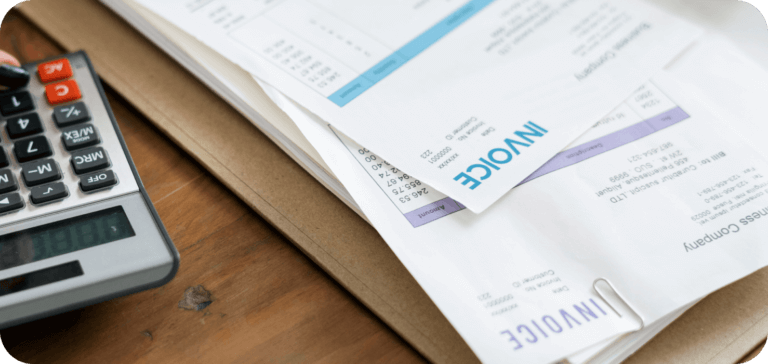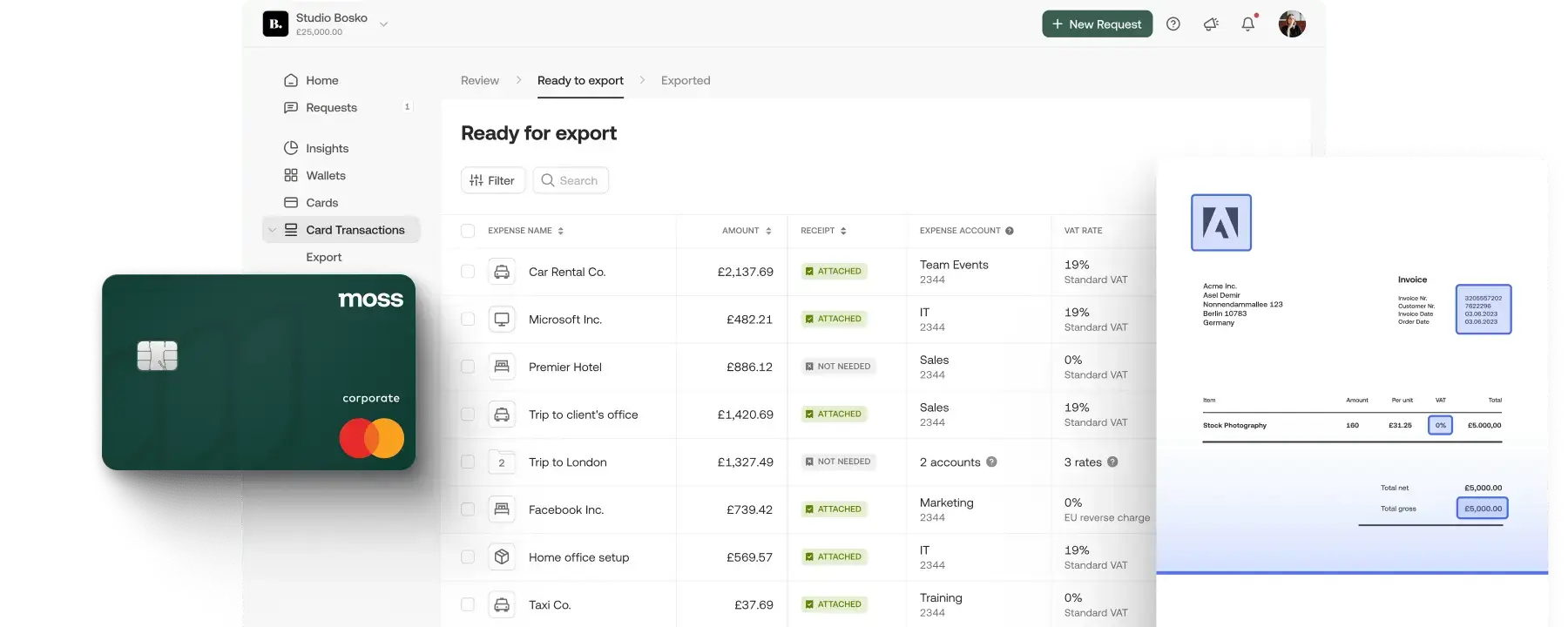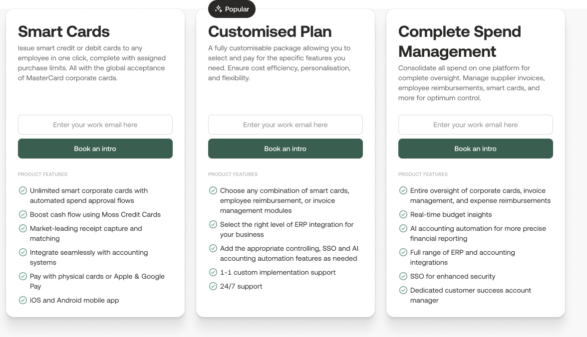Liquid assets are assets that can be quickly and easily converted into cash. They’re essential for businesses and individuals alike, providing liquidity that is needed to pay short term liabilities, secure credit, and a host of other finance-related considerations.
In this article we’ll explain more about liquid assets, their uses for businesses, and various ways you can manage liquidity with processes and software.
What are liquid assets?

A liquid asset is an asset that can be readily converted to cash without losing its market value. How readily an asset can be converted to cash depends on a few different factors:
- A large pool of potential buyers
- Predictable or stable market price
- Quick conversion into cash
- Clear and established method for transfer of ownership
Liquid assets are sometimes mistakenly referred to as current assets. However, liquid assets are technically a subset of current assets. Where liquid assets are assets that can be quickly and easily converted into cash, current assets are assets a business expects to convert into cash, sell, or consume within the space of a year.
Assets on a scale of liquidity

By definition cash is the most liquid asset an individual or business can possess. All other assets can be placed on a scale of liquidity in relation to cash. The diagram below shows a couple of examples, from cash, down to real estate as one of the most illiquid assets.
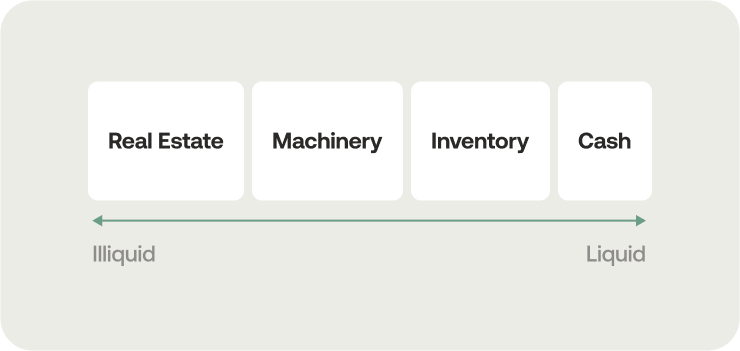
Most of the assets that sit closest to cash on the liquidity scale are referred to as cash equivalents due to their high liquidity and low investment risk. Examples of cash equivalents include:
- Treasury bills (T-bills)
- Short-term government bonds
- Commercial paper
- Treasury notes
To be classified as cash equivalents, these assets have to be three months or less away from maturity.
On the other end of the spectrum you have illiquid assets. These are assets that are difficult to convert into cash quickly and easily without significant loss of value. However, they tend to provide better long-term returns than liquid assets. Examples of illiquid assets include:
- Real estate
- Machinery and equipment
- Collectible items
- Artwork
Many of these asset types are only relevant for private and institutional investors. Businesses tend to hold a different range of assets because they have operational needs that require working capital.
It’s important to note that the range of assets held by a company is highly dependent on its size, structure, and business model. For instance, startups heavily prioritise liquid assets so that they can invest in areas or their business that will help them grow most effectively. On the other hand, large multinationals, hedge funds, and increasingly insurers, tend to have a higher share of illiquid assets on their balance sheets.
Common examples of liquid assets held by businesses

Cash
Businesses need cash to support their day-to-day operations. This includes everything from paying employees’ salaries, to paying for business expenses, and keeping the procurement process in motion.
When you think of cash you probably think of hard currency, i.e. cash in its physical form. But the money that businesses store in the bank is also classed as cash. This money is effectively the same as physical currency because it can be transferred immediately to other companies.
In fact, physical cash is quickly being replaced by electronic payments methods, which are more convenient and secure. Most B2B payments are made using electronic money transfers or credit/debit cards.
While it’s true that cash is king, one downside of cash is gradual loss of purchasing power over time as a result of deflation.
Cash equivalents
Businesses also hold cash equivalents that provide quick, easy access to cash, but higher returns than simply storing money in the bank. These include the following:
Marketable securities
Marketable securities are financial assets that can be quickly and easily sold for cash on public markets. They are a popular asset for businesses because of their high liquidity, and higher return rate than cash. However, the liquidity of marketable securities is highly dependent on trade volume. The higher trade volume, the more liquid the marketable security.
Marketable securities can be broadly split into two main types:
- Debt securities represent the terms of a loan between an issuer and an investor. The investor buys the debt from the issuer in exchange for interest payments, and then receives the total amount of initial debt once the loan has reached maturity. Examples of debt securities include bonds, treasury bills and commercial paper.
- Equity securities represent a share of ownership of a company, i.e. stocks and shares. As such they pay out dividends based upon the assets and earnings performance of the company. Equity securities are considered to be more risky than debt securities because they do not hold any collateral backing (in the case of debt securities this is a loan).
Other short term investments
Businesses may also hold various other short-term investments that are classified as cash equivalents. This includes money market funds, other interest-bearing accounts and certificates of deposit. In order to be classed as liquid, these investments must reach maturity in less than one year.
Accounts receivable
Accounts receivable is the money that is owed to your business by customers and clients. Accounts receivable is classified as a liquid asset on the balance sheet because it can usually be converted into cash within a short period. This is dependent on specific payment terms and the current operating cycle, but is usually 30 to 90 days.
Managing accounts receivable, including payment schedules, penalties, and discounts, is crucial for maintaining liquidity. A backlog of outstanding accounts receivable has a direct impact on the amount of cash you’ll have at hand in the near future.
Illiquid assets held by businesses
Where liquid assets are essential for ensuring the financial health of a business, illiquid assets are essential for its operational capabilities and long-term financial investments.
Inventory
Inventory sits on the boundary between liquid assets and illiquid assets. Whether it’s classed as liquid or illiquid depends on market conditions, like current demand and sales cycle length for that particular product.
Generally, inventory is considered a liquid, current asset because it’s expected to be sold within a year. When demand is down, inventory value decreases, and sales timelines increase, which decreases its liquidity.
Equipment and machinery
Another illiquid asset that is essential for businesses is equipment and machinery. These assets, which are used to produce goods and revenue are known as fixed or capital assets.
Real estate
Real estate is generally the most illiquid asset a company can possess. This includes office space, production facilities, land, etc. While many businesses rent these assets, others own them, partially as a long term investment.
Why do businesses need liquidity?

Businesses need enough liquid assets or liquidity to ensure they can meet their short term financial obligations. This includes paying suppliers, employees, creditors, and other fixed costs. Liquidity also gives businesses the flexibility to cover unexpected costs, which could arise from challenges or opportunities. As a result, liquidity is a major consideration in financial planning and analysis (FP&A).
Managing liquidity
While liquidity equips businesses for spending, having too much can be a sign that a company is not be investing in growth as efficiently as it could. An excess of cash or other liquid assets may indicate a lack of long term planning or efficiency in allocating funds. Effective liquidity management is a balancing act between multiple different cash flow and spend-related factors.
Listing assets on the balance sheet
The assets that a business owns are listed on the balance sheet. This is one of the three core financial statements that are used in financial reporting:
- Balance sheet
- Income statement
- Cash flow statement
Cash and cash equivalents appear at the top of the company balance sheet as current assets as they are the most liquid assets a company possesses. The further down the balance sheet you go, the less liquid the assets become.
Managing your spend with Moss
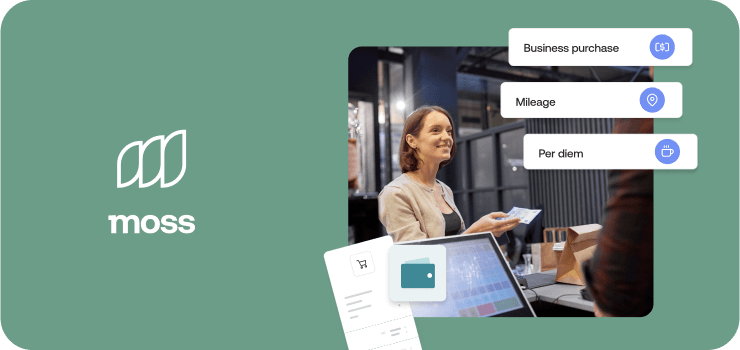
At Moss we give businesses full control over their spending with our comprehensive spend management platform. Our software helps thousands of customers manage their spending, accounts payable, and expense workflows more efficiently, all from one place.
Finance teams can save time and money by automating workflows end-to-end. Instead of processing invoices and receipts manually, Moss allows you to scan documents directly into the app using your smartphone camera. Our software then extracts all necessary data and document fields, and stores them digitally for processing and reference.
Our system also integrates directly with accounting software like Xero and DATEV, as well as other critical business tools, so your finance team can benefit from a smoother, more intuitive process for payments, expenses, and pre-accounting.
FAQs
Liquid assets are assets that can be quickly and easily converted into money. To be considered liquid, the maximum timeframe for conversion into cash is usually one year.
Assets can be placed on a scale of liquidity, where cash is the most liquid asset possible.
At the other end of the liquidity scale are illiquid assets. These are assets that cannot be converted to cash without significant loss in value. While illiquid assets are less readily converted to cash, they still play an important role in running and maintaining a profitable business. One example is real estate which tends to act as a longer term, inflation-resistant investment.
Precisely how much liquidity a business should maintain depends on its business model and growth plans for the future. For example, startups generally require much higher liquidity to ensure high levels of growth and flexibility in the face of shifting market conditions.
